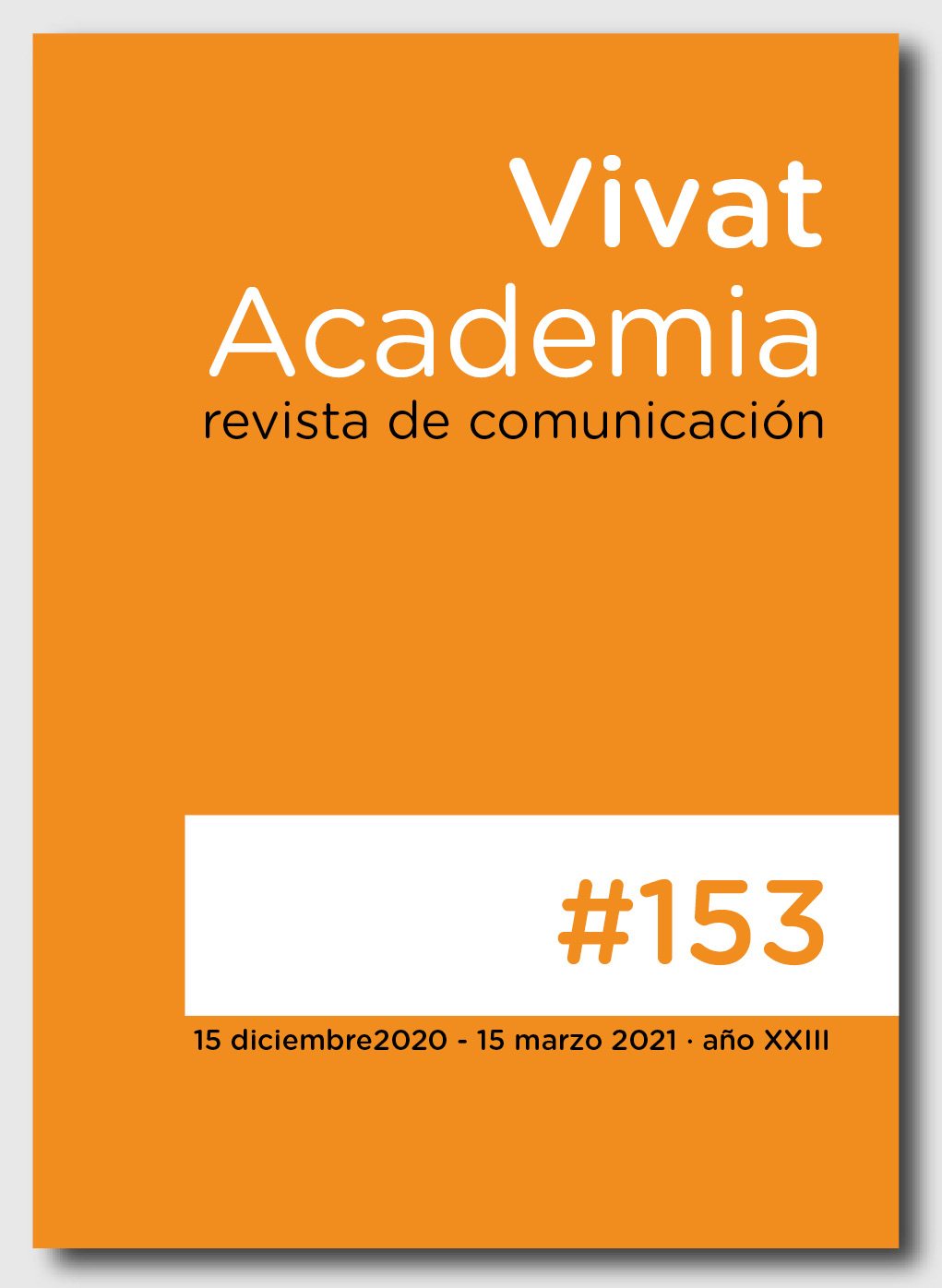The creative process of the carnival groups of Cadiz.
Main Article Content
Abstract
The Cadiz Carnival and the groups that participate in the COAC (Official Contest of Carnival Groups) have a number of followers that every year increases. This boost in the audience is due to the dissemination of the media and social networks, but above all, due to their quantity and creative quality. It´s a cultural manifestation that is becoming increasingly important in the academic field. This article aims to study something that always remains hidden from followers and spectators (and even among the authors and creators of the coplas): the process of audiovisual creation of the groups (lyrics, music, and staging). Here, in addition to a panoramic view of the processes of audiovisual creation of the authors, it is analyzed for the first time whether they follow a similar pace regardless of the modality, if each one is different, or if they have common times and organizations. Through a qualitative methodology and weekly monitoring of the creative process to various authors of each competing modality, this article responds to the aforementioned questions about the carnival groups in Cádiz, which belong to the popular culture with great communication potential. It is a phenomenon that, although it has a dispersed and individualized process, there are fundamental coincidences in the order of creation. The results obtained can serve to deepen the knowledge of this phenomenon as well as possible help those who want to approach carnival creation.
Downloads
Article Details

This work is licensed under a Creative Commons Attribution-NonCommercial-ShareAlike 4.0 International License.
The main author must deliver the letter of transfer of copyright, according to the model provided by Vivat Academia, Revista de comunicación, which declares the transfer of copyright to the journal and make explicit the rights of authors regarding the dissemination and use of the manuscript once published.
Creative Commons Attribution/Non Commercial 4.0 International
References
Aragón Becerra, Juan Carlos (2010). El Carnaval sin apellidos. Un arte mayor para una chusma selecta. Cádiz: Artes Gráficas Nueva.
Aragón Becerra, Juan Carlos (2012). El Carnaval sin nombre. Ni mayor el arte, ni selecta la chusma. Cádiz: Artes Gráficas Nueva.
Bajtin, Mijail (1990). La cultura popular en la Edad Media y en el Renacimiento. El contexto de François Rebelais. Madrid: Alianza.
Eco, Umberto (1987). Apocalípticos e integrados. Barcelona: Lumen.
Fernández Jiménez, Estrella (2015). Acercamiento a la creatividad de las chirigotas gaditanas. En Creatividad y Sociedad. 24, pp. 64-88.
Fernández Jiménez, Estrella (2016). El potencial comunicativo de las chirigotas gaditanas y su realización televisiva. (Tesis doctoral). Universidad de Sevilla.
Fernández Jiménez, Estrella (2018). La Final del Falla. Un estudio sobre la realización televisiva del COAC. Cádiz: Servicio de publicaciones de la Universidad de Cádiz.
García Argüez, Miguel Ángel (2018). Doce pájaros en el alambre. Cádiz: Cazador de ratas.
García, Luis; Pérez, Álvaro & de Castro, Javier (2016). La canción de Cádiz. Cádiz: Dalya.
Huizinga, Johan (1987). Homo ludens. Madrid: Alianza.
Kowzan, Tadeusz (1997). El signo y el teatro. Madrid: Arco Libros.
Mendiburo, A. & Páez, D. (2011). Humor y cultura. Correlaciones entre estilos de humor y dimensiones culturales en 14 países. Boletín de Psicología. 102, julio, pp. 89 – 105
Orozco, Guillermo & González, Rodrigo (2012). Una coartada metodológica. Abordajes cualitativos en la investigación en comunicación, medios y audiencias. México DF: Productora de contenidos culturales.
Páramo, María Luisa (2017). El carnaval de las coplas, un arte de Cádiz. Madrid: Izana.
Penagos, Julio César & Aluni, Rafael (2000). Creatividad, una aproximación, en Creatividad 2000. Revista Psicología Edición Especial año 2000.
Ramos Santana, Alberto (1985). Historia del Carnaval de Cádiz. Cádiz: Caja de Ahorros de Cádiz.
Ramos Santana, Alberto (1996). Rasgos miméticos del carnaval en la provincia de Cádiz, en Alberto Ramos. VIII Congreso del Carnaval. Cádiz: Ayuntamiento de Cádiz, pp. 309-320.
Ramos Santana, Alberto (2002). El Carnaval Secuestrado o Historia del Carnaval. El caso de Cádiz. Cádiz: Quorum Editores.
Rodrigo, Miquel (2007). Los Modelos de la Comunicación. Madrid: Tecnos.
Sacaluga, Ignacio (2014). El carnaval de Cádiz como generador de información, opinión y contrapoder: análisis crítico de su impacto en línea y fuera de línea. (Tesis Doctoral). Universidad Europea de Madrid, Madrid.
Simik, Marco (2013). Declaraciones del director del documental Cádiz, la ciudad que canta en http://elclubexpress.com/cadiz/2013/10/04/marko-simic-la-idiosincrasia-gaditana-ante-el-objetivo/ Consultado el 26 de marzo de 2014.
Steingress, Gerhard (2006). El caos creativo: Fiesta y música como objetos de deconstrucción y hermenéutica profunda. Una propuesta sociológica, en Revista andaluza de ciencias sociales, nº 6 pp. 43-75.
Toledo, Sergio (2012). Cómo crear un programa de televisión. La creatividad y su aplicación a lo audiovisual. Barcelona: Laertes.
Vázquez, Manuel Ángel (2014). Creatividad y Mindfulness. En Investigación y docencia en la creación artística, Pablo García Sempere, Pablo Tejada Romero & Ayelén Ruscica (Coordinadores), Granada: Editorial Universidad de Granada, pp. 11-27.
Amabile, Teresa (1983). The social Psychology of Creativiti: A componential conceptualization. En Journal of Personality and Social Psychology 45, no. 2, pp. 357–377. DOI: https://doi.org/10.1037//0022-3514.45.2.357
Guerrero Roldán, José (2013). Programa de televisión A por todas en 8 tv Andalucía, 30 de octubre de 2013.





